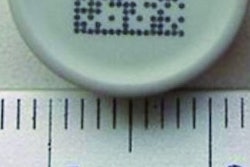
But now there’s talk of putting a unique identifier on every packaged product found on a store shelf—from toothbrush to shampoo to tomato paste to dairy product to coffee. The goal? To make every product that a consumer encounters digitally unique and interactive.
What it all comes down to is that CPG companies see enormous opportunity in establishing direct one-to-one relationships with consumers. This represents a fundamental shift from the prevailing dynamic, where it’s been the retailers that have leveraged the latest in Information Technology tools to engage consumers and forge that all-important one-to-one relationship with them. The problem with this dynamic, from a CPG company’s perspective, is neatly summarized in a recent white paper from McKinsey & Co.: “When the retailer owns the algorithm and the data, it has more negotiating leverage over its [CPG company] suppliers. Furthermore, maintaining systems links with numerous retailer platforms could become highly complex and costly for CPG companies to manage, and it could hinder the development of their own solutions. Unless CPG manufacturers begin to shape their own solutions, they will continue to be saddled with an increasing number of reactive and expensive one-off customer IT requirements just to keep up.” So what should CPG companies do? Develop their own data aggregation solutions and tip the balance of power back in their favor, says McKinsey.
That’s where firms like Kezzler AS and Verify Corp. come in. Based in Oslo, Norway, Kezzler has developed a proprietary process for generating billions of unique encrypted codes for application by existing package coding and marking equipment. The codes can also be read and verified by the consumer using readily available devices like smartphones. But unlike more traditional brand protection tools that employ serial codes in a database, the “kezzlercode” is not stored in a database. There is no database. Instead there’s an algorithm. When a code is entered into the Kezzler system—whether scanned or entered as an alphanumeric string of characters—it’s run through a mathematical equation to determine if it was issued by Kezzler in the first place. If it was, a number of messages can be sent to the consumer—cents off, recipe ideas, complementary products that might be purchased, or “buy four and you get one free,” for example.
Because it’s a direct communication from the CPG company to the consumer, it’s a way of building brands through interactive marketing. But it also protects brands against counterfeits and improves supply chain efficiency through secure track and trace. By applying a unique encrypted identity to every package, the system can show, in real time, exactly where and when a product went awry should it go awry. Kezzler also touts its digital mass encryption system’s scalability, claiming it’s capable of orders of magnitude greater scale because it stores no serial codes, and there is no database. Rather than referencing a scanned code against a stored number, an encryption algorithm is used to verify that the code is valid. As Kezzler puts it, it’s applied mathematics, not bookkeeping.
Also looking at ways of helping CPG companies improve their consumer engagement strategies is Verify Engage. This Minneapolis-based firm offers a cloud-based solution that it calls Event Sourcing. It’s a software architecture that also relies on unique identifiers called Adaptive Codes™. Using these codes—again, they’re generated and managed by Verify Engage, imprinted on packages by conventional marking and coding equipment, and utilized by consumers via smartphone—brand owners can deliver targeted promotions while collecting rich analytics and real-time insight into when, where, and how consumers use their offer. This lets them tailor future offers based on what the consumer wants.
Adaptive Codes, kezzlercodes, Event Sourcing, encryptions, analytics, algorithms—it’s not your father’s marketing and brand loyalty program. But I have a sneaking suspicion that it’s the kind of thing no CPG company can afford to ignore.


























